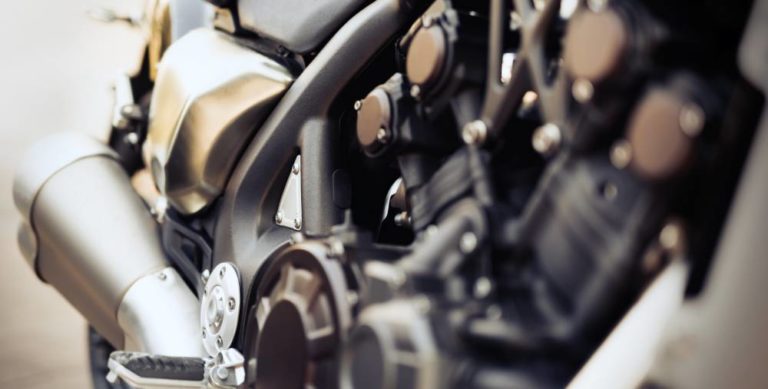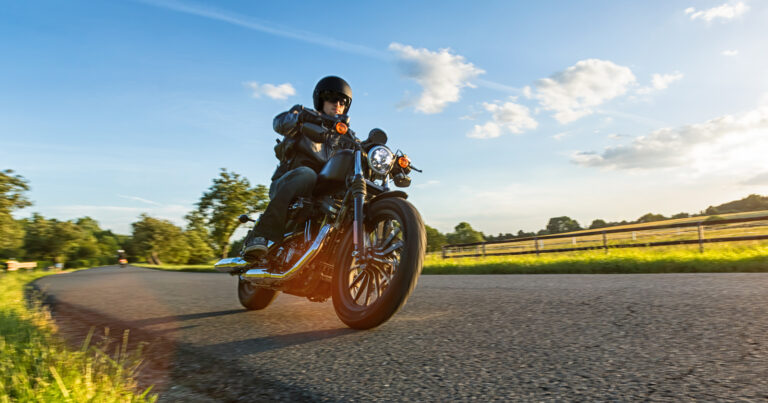Ultimate Guide to Motorcycle Overheating Symptoms, Causes & How To Prevent
This post may contain affiliate links. That means if you click and buy, we may receive a small commission (at zero cost to you). Please see our full disclosure policy for details.
Would you prefer having a frustrating runny nose in the middle of a less serious meeting to having your day spoiled with motorcycle overheating symptoms in a contest? Certainly, neither of the two gives any excitement, but, one is sure that having no shoes at all is better than wearing a half-cut pair.
Whether you think in terms of the blazing summer heat or the abnormal operating temperature of the engine, your bike would give nothing close to satisfaction when you put it on the road.
If you have experienced serious motorcycle overheating symptoms, there are a few things you need to look out for. The symptoms themselves are a consequence of deeper issues that, if not properly and promptly handled, could lead to more damage to the engine.
Now let us examine what we mean when we say a bike engine is overheating. Today, most motorcycle engines are designed to operate within 195 to 200oF. This relatively consistent operating temperature is essential to control some things, including proper emissions, greater engine performance, and fuel economy. If there is an increase outside this temperature range, then your engine starts to overheat.
1. Smelling Engine
One of the most common symptoms of a motorcycle Davidson engine overheating is smelling the engine. When you find out that your hot air cooled motorcycle engine starts to give out a smell like that produced by the burning section of your rice-boiling electric cooker, then you should note there’s an engine overheating.
2. Loss of Power
When you notice that your motorbike is sluggish, it is a sign that your engine is overheating. Typically, you’ll notice that 3000 rpm is giving out a speed that is lower than what it used to produce. This can especially be concerning on a 1450cc twin cam 88b V twin with electronic sequential port fuel injection.
3. Detonating Engine
Motorcycle overheating symptoms also come in the form of your engine detonating. In this way, the engine will start to ping or knock and lose power when it is under load. The ‘pinging’ or ‘knocking’ sound may seem unfamiliar, but try to imagine the sound you hear when a rock falls around the inside of a valve train. This can be observed even on models like the 2003 Harley Davidson FXST Softail Standard, which features a balanced engine and clean lines.
4. Sluggish Motorbike
You may also notice overheating symptoms when your motorcycle starts to feel heavy or sluggish when it is under load. This is one sign you don’t want to overlook because rough shifting might start, making it difficult for the bike to get into gear—even with foot controls on a Davidson FXST Softail Standard with laced wheels and bobtail fender.

Causes and Solutions for Motorcycle Overheating Symptoms
Now that you understand what engine overheating means and what symptoms you need to look out for, it is important to know what could be the causes, so that the next time you experience motorcycle overheating symptoms, you don’t panic.
1. Leaks in the Cooling System
Usually, when there are leaks in your motorcycle engine’s cooling system, your engine will naturally overheat. Some of the possible points where your engine coolant could leak include the hose, radiator, heater core, water pump, head gasket, etc. This is especially critical for models with hidden rear suspension and horseshoe oil tank setups.
2. Faulty Fan Clutch
A faulty fan clutch is also one of the common causes of overheating problems. It could be that there’s a problem with the wiring, relay, or sensor, on the one hand, and or fan motor, on the other. If you try to jump the fan directly to the battery and the system runs, the problem is with the fan wiring or sensor. If it fails to run, the fan motor is faulty.
3. The Fault with the Water Pump Shaft
Any wobble in the water pump shaft or seepage could aggravate engine overheating. Hence, there’s a need to change the water pump as soon as you find out it is bad—especially in softail standard frames made with mild steel and horizontal mounted setups.
4. Loose Belt of Bad Hoses
Motorcycle overheating occurs when your engine hoses and belts are in bad condition. A loose belt prevents water from pumping and hence does not allow the coolant to get enough water. Tighten the loose belt or change if bad; replace the faulty hoses. On hardtail styling with hidden horizontal rear shocks, this is critical due to more compact routing.
5. Clogged Radiator
Even your radiator could be clogged with dirt, bugs, or debris and so block airflow. It could also be that the radiator is leaking. On 2003 Softail Standard Specs, this affects front suspension operation and final drive performance, along with ground clearance and dry weight balance.
Conclusion
Here’s the final point to take home: once you notice any of the motorcycle overheating symptoms, the best thing to do is to shut off your bike immediately. If you fail to do that, you may be calling for a disaster, which can include a seizing piston. In the long run, your engine may get wrecked for good.
Never overlook any of the signs that pop up each time you’re using your engine. Regular servicing and checks are recommended so as to follow up with the usage and performance of your engine.
Whether you’re riding a 2003 Harley Davidson FXST Softail Standard in Luxury Rich Red Pearl, Gunmetal Pearl, or Vivid Black, with a black horseshoe oil tank, four stroke two valves per cylinder, bore x stroke of x 101.6, compression ratio tuned for cruising, fuel capacity for extended rides, and overall length suited to hardtail styling, keeping an eye on rear suspension and MH90 21 54H front tires is vital.
- Harley Davidson fuel filter symptoms and warning signs
- Harley Davidson Voltage Regulator Symptoms & What Is It?
- Harley Davidson Ignition Coil Symptoms
- Harley Davidson Intake Leak Symptoms
- Harley Davidson Fuel Filter Symptoms







